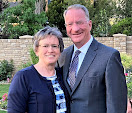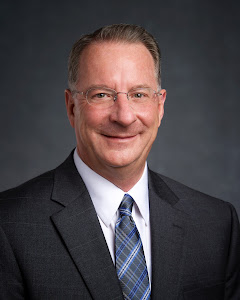
We made it to Talca on Tuesday evening. We arrived and headed into town. Again, the street signs were minimal. Some road construction creates some stir, but we made our way into the city by the Google map that I had made. Again, with Google’s help but with God’s help more, we found the hotel. We parked on the road and walked in and checked in. It was a bit eery because I felt as if we were really strangers in a stranger land. We checked in. They told me to park in the back of the hotel. I went outside and was ready to get in the car when a young man dressed in a uniform of sorts handed me a piece of paper and said, $230 pesos por favor. I asked him why? He told me that I had parked and that I owed money for parking on the side of the road.
With a bit of disgust, I told him I didn’t have any money because Joanne had it all. Let me park, and I would return with the few monedas that I owed. So, that’s what I did. I parked in the back; and while I went out to pay the young man, the the bellman hauled out luggage upstairs and helped us in our room.
Once inside, we arranged things and then I called Walky to see what was going on with the Diaz family. She said that she would be right over because her office was very close by. Within five minutes, she was there, giving us abrazos and such to welcome us to Chile. We jumped in the car and headed to her house, with a stop by the school to pick up Tamara y Natan, her two children. We arrived at the school, and they had already gone home. So, we turned around in the very narrow street and headed to the Diaz Family’s house.

We brought our presents with us and handed them out once we got in. Hermano y Hermana Diaz were very excited to see us. It was wonderful to say hello to them once again. We had a wonderful chat, and then we loaded up in two cars and headed to Rio Claro, one of the parks there in Chile. I remember having a picnic with the branch when I served her. And I remember eating sandia (watermelon) in the park with my companeros, just prior to going on a hike through the mountains. This hike result in a few blisters but a sunburn beyond sun burn. We took a few pictures and then headed to the top of the hill so we could see out over Talca. We parted company with Hermano y Hermana Diaz because they were going home to make Once for us, which I told them they didn’t have to do, but they wanted to do it anyway.

The ride to the hill was a short one actually. We arrived and looked out over Talca. Walky explained the changes that had occurred even her last fifteen years while she was in Brazil. Talca had really changed. Lots of new housing development had spread on various sides of the city. We then walked up to an old church, just up from where we parked. I took a few pictures, and then we watched the children play in the yard around the church. Walky said she let them play because in Brazil, you couldn’t let them play because of all of the snakes and other venomous things that hung around everywhere. I don’t think I could live in a country like this.

After our time there, we went to the Daiz’s house where we had once, which is comprised of bread, juice, cheese. Hermano Diaz had me give the blessing on the food, which was a wonderful experience for me. We had a wonderful conversation. After once, we sat in the living room. Soon young Guillmero came. Walky, Hermano Diaz, and Walky sang two songs for us, one was the Cueca and the other was
Te Vas Para Chile, which is the national song. It was wonderful. Hermano Diaz inserted their names to pass by when we visited Chile. Just delightful.

On Wednesday, we started the day out with desayuno of bread, fruit, yogurt, thinly sliced meats, and bottled water at the hotel and then walked around downtown to see the city. I went to 2 Sur 937 to see if I could see my old pension. What I think was my pension is now boarded up. The little Mercado next door is now some sort of negocio. Gone are the real things; the only things that stayed our memories of walking to the house and being let it by Yolanda or the other maid whose name totally and completely escapes me.
Around 11:45 a.m., we met up with Walky and headed out to the La Universidad de Talca. We walked around a bit and then we went to the medical school part, specifically the dental part and visited with a few people. After the university visit, we headed once again to the Diaz family. They had prepared such a delicious meal for us—fish, potatoes, tomatoes, and fruit for dessert. It was delicious. We had such a good time. After the meal, Joanne and I drove to the church house where we thought the baptism was going to be. We felt good about knowing where it was just in case it was dark when we actually went to the building. Then we went home. Amazing, the street changed, and it became a one way really quickly, and everyone was quasi nice about it when we were driving up a wrong way for about one block. Then, we went home and took a nap. This nap business is getting in the way of visiting more, but the four-hour time difference is creating some havoc.
I took a short nap while Joanne lingered en la cama. While she slept, I attempted to do some more writing before we needed to go to the baptism. Around 7:00 p.m., I woke Joanne, and we got ready and left the house. We arrived at the appointed church house. A gentleman was just going in when we pulled up. I approached him, and he told me that this wasn’t the church house and gave me directions. Well, I had no idea where this was. I couldn’t believe this: Here we were trying to do what we were supposed to do. Well, we attempted to follow directions, but we couldn’t find the church. Time was gaining on us, and we were about to be late. We started back to the house to call Walky when all of a sudden I saw a church spire to my left. I quickly turned left and “poof” a church house appeared out of nowhere. We parked and went in. There was Walky who gave a sudden sigh. We had made it, thanks again to our Heavenly Father who continues to guide us in these days.
We met everyone and took pictures out in the hallway. Natan looked cute in his white clothes. The meeting started about 30 minutes late for some reason. The brother who was conducting asked that I come bear my testimony, which I did. I didn’t do as well as I would have liked. Also, during the baptism ceremony, I was one of the witnesses.

Afterwards was when I gave my testimony, and then I confirmed Natan Alexander Egar Diaz. It was a great experience. We blessed him that he would prepare well to be a good missionary, that he would be an excellent missionary, that he would listen to his mother’s counsel, that he would do everything he can to be the person Heavenly Father wants him to be. We also blessed his mother through him.
After the baptism and the confirmation, Brother Diaz and Walky stood and bore their testimonies. They both thank Joanne and me for taking time and coming to Chile for this occasion. They were too kind and gracious to us. We went into the cultural hall and had a few snacks. I met other members of the church. I met a young woman, Walky’s age, who had the opportunity to play basketball for BYU, but her mother told her she couldn’t go. So, she became a professional women’s basketball player and went to the Pan-American games. She now coaches a national women’s team. She was a hoot. I enjoyed visiting with her.
We took lots of pictures of the Diaz Family and the Hammon Family. It was very, very fun. We loved being there with them.


As we all left the capilla, we all hesitated just a bit because we knew that, perhaps, this might be the last time we saw each other. Yes, we made promised to “volver” to visit them. But it took me thirty years to make it back, and few gente are still around. We gave each other abrazos Chilenos, said our teary goodbyes, and then left in separate cars/camiones, each waving a fond farewell. Was the night worth it? Absolutely! Incrediblly, Sonja was there with her four children, two boys and two girls. She told me that her youngest was going to be baptized next year.

Wonderful times with Diaz Family. They are absolutely wonderful! We love them! We enjoyed our stay in Talca. I wish it could have been longer. We didn't get to see the Avendano family. Some of them were supposed to come to Natan's baptism. Later, I did "Facebook chat" with Priscila. The three children I knew have all been married in the temple. That is fantastic!





























































